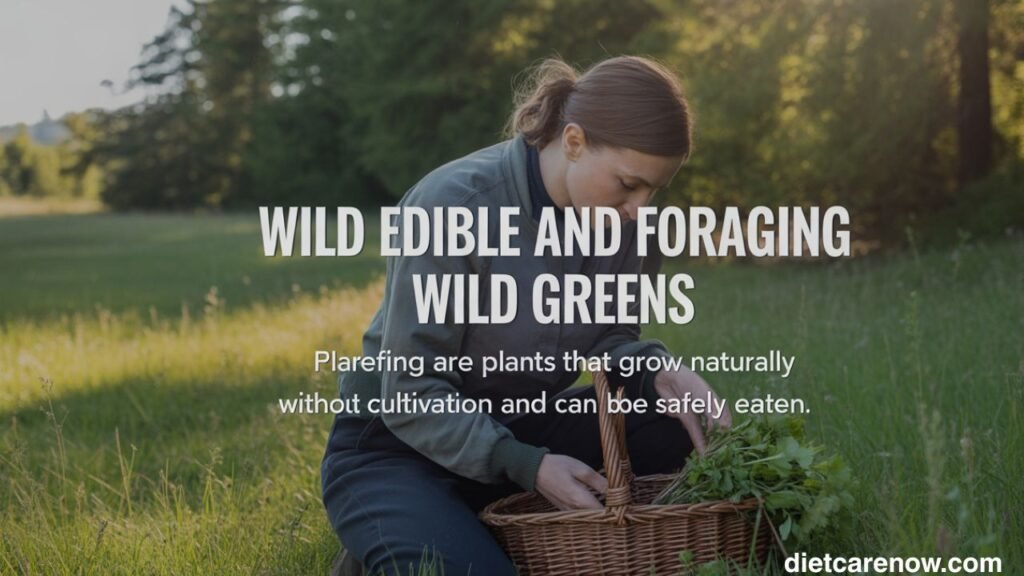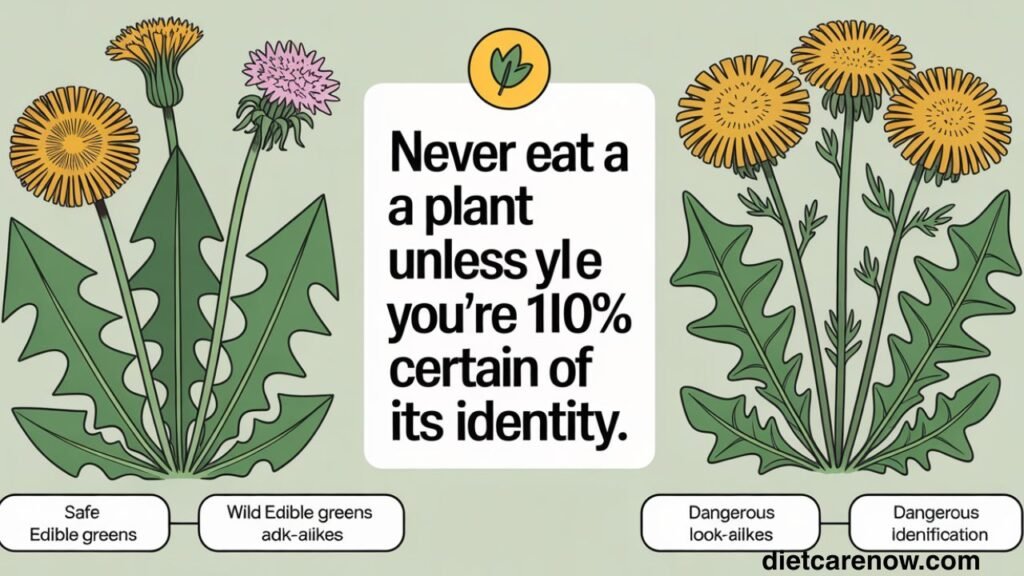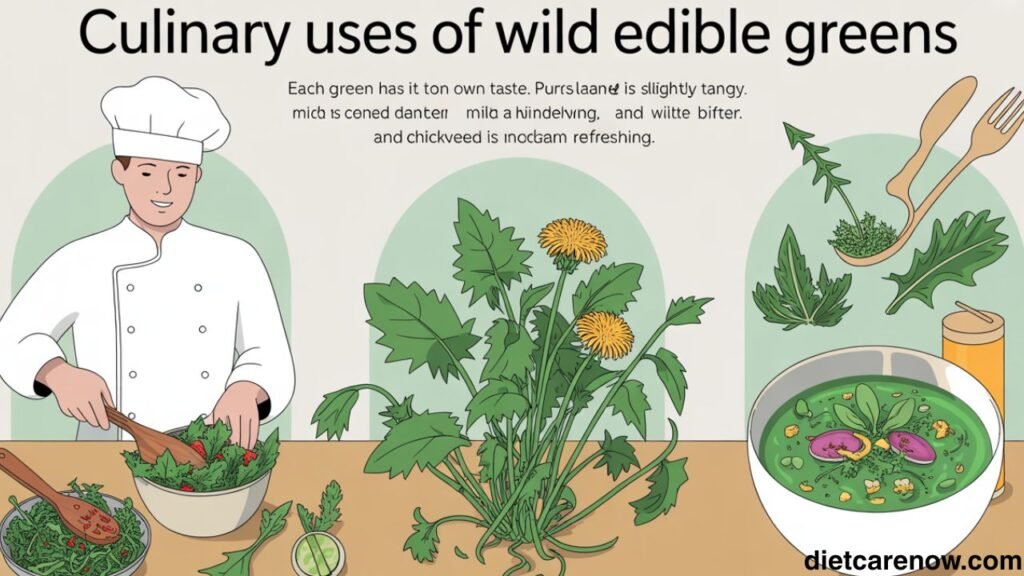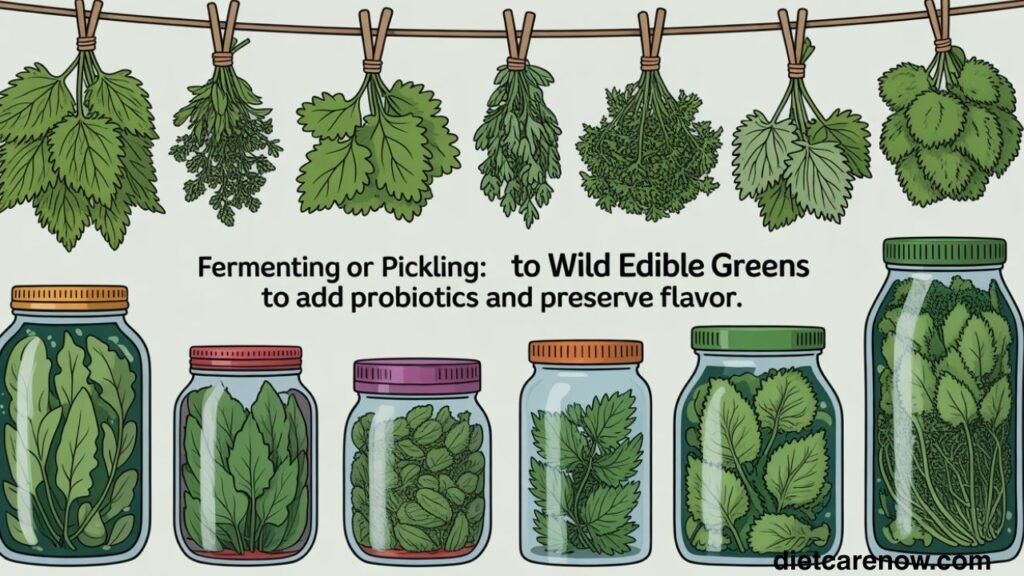When you think of leafy greens, your mind probably goes to spinach, kale, or lettuce stacked neatly in grocery store bins.They grow freely in meadows, woodlands, and even in cracks along sidewalks. These are wild edible greens—plants that have nourished people for thousands of years and continue to offer incredible benefits today.
Wild greens are not a “new trend.” They’ve been part of human diets for centuries, shaping traditions, cuisines, and survival practices across cultures. Today, as more people look for ways to eat sustainably and reconnect with nature, foraging wild greens has regained attention.In this article, we’ll explore the nutritional value, health benefits, cultural history, safe foraging practices, and practical ways to use wild greens in your kitchen and lifestyle.
Definition and Importance of Foraging Wild Greens
Wild edible greens are plants that grow naturally without cultivation and can be safely eaten. They include species like dandelion, stinging nettle, chickweed, purslane, and lamb’s quarters. Unlike cultivated vegetables, they thrive without human intervention—no fertilizers, no pesticides, just nature doing what it does best.
Also read: /winco-cottage-cheese/
The importance of foraging these greens lies not only in nutrition but also in sustainability. Foraging strengthens the bond between people and the land. It also provides a sense of independence, teaching us that food doesn’t always need to come from shelves and packaging.

Historical and Cultural Significance
Our ancestors depended on wild greens long before agriculture existed. Ancient Romans ate dandelion greens as a spring tonic. Native American tribes used lamb’s quarters and plantain leaves both as food and medicine. In many Asian and Mediterranean cuisines, wild greens still play a central role in soups, stews, and teas.
During times of scarcity—wars, famines, and economic hardships—wild greens often became a lifeline. They were accessible to anyone who knew how to identify them. Even today, many rural communities still forage seasonally, keeping old traditions alive.
Health Benefits of Wild Edible Greens
Nutrient Density Compared to Store-Bought Vegetables
Wild greens often pack more nutrition per bite than their cultivated counterparts. For example, lamb’s quarters have more iron and calcium than spinach. Dandelion greens contain higher levels of vitamin A than many store-bought greens. Because they grow in natural soil without selective breeding, their nutrient diversity is broader.
Vitamins, Minerals, and Antioxidants
Many wild greens are loaded with essential nutrients:
- Vitamin C: strengthens immunity and supports collagen production.
- Vitamin A: crucial for eye health and skin.
- Iron and calcium: support blood health and strong bones.
- Antioxidants: fight free radicals and reduce inflammation.
Role in Boosting Immunity and Overall Health
Including wild greens in your diet may help strengthen immunity, improve digestion, and reduce the risk of chronic diseases. Their phytonutrients and bitter compounds also stimulate the liver and aid detoxification—something most modern diets lack.
Why Forage Wild Greens?
Sustainability and Eco-Friendliness
Foraging reduces dependency on industrial agriculture. By eating what nature provides freely, you cut down on packaging waste, transportation emissions, and water use.
Cost-Saving Benefits
Wild greens are free. With a little knowledge and careful harvesting, you can add nutrient-rich food to your meals without spending a dime.
Connection with Nature and Self-Sufficiency
Foraging is more than collecting plants—it’s a mindful activity. It makes you pay attention to seasons, landscapes, and ecosystems. That connection builds appreciation for natural cycles and a sense of self-reliance.
Popular Wild Edible Greens Around the World
Some widely recognized wild greens include:
- Dandelion greens – bitter yet nutrient-packed, great in salads and sautés.
- Nettles – rich in iron and minerals; delicious when cooked in soups or teas.
- Lamb’s quarters – similar to spinach but even more nutritious.
- Chickweed – mild flavor, often used raw in salads.
- Purslane – succulent leaves with omega-3 fatty acids, common in Middle Eastern cuisine.
- Plantain leaves – slightly chewy and earthy, used both as food and medicine.
Each plant has unique flavor notes and cultural uses, making them versatile additions to the table.
Seasonal Availability of Wild Greens
The availability of wild greens depends on the climate and time of year:
- Spring: tender shoots like dandelion, chickweed, and nettles thrive.
- Summer: lamb’s quarters, purslane, and amaranth are plentiful.
- Autumn: hardy greens like plantain and late-season dandelions remain.
Knowing the seasons helps ensure a steady, diverse supply of greens throughout the year.
How to Safely Identify Wild Edible Greens
Common Look-Alikes and Dangers
Some edible greens have poisonous look-alikes. For instance, wild carrot resembles poisonous hemlock. Accurate identification is essential.
Tips for Avoiding Poisonous Plants
- Never eat a plant unless you’re 100% certain of its identity.
- Start with a few well-known species and learn them thoroughly.
- Use multiple characteristics—leaf shape, flower type, stem structure—to identify.
Importance of Using Field Guides and Expert Advice
Field guides, apps, and local workshops can provide reliable knowledge.

Foraging Etiquette and Sustainability Practices
Foraging should always be responsible:
- Harvest in moderation, leaving enough for the plant to regenerate.
- Avoid rare or endangered species.
- Respect property rights and local foraging laws.
- Take only what you’ll use—waste goes against the spirit of foraging.
This ensures ecosystems remain healthy and future generations can enjoy the same abundance.
Nutritional Comparison: Wild Greens vs. Cultivated Greens
Research shows wild greens often surpass cultivated ones in vitamins and minerals. For example:
- Nettles can contain nearly twice the calcium of kale.
- Purslane is among the best plant-based sources of omega-3 fatty acids.
- Dandelion greens provide more vitamin A than spinach.
While cultivated greens are valuable, wild varieties often bring a more diverse nutritional profile.
Culinary Uses of Wild Edible Greens
Cooking Methods
Wild greens can be:
- Steamed or sautéed like spinach.
- Added to soups and stews for depth of flavor.
- Brewed into teas (nettle tea is a classic).
Recipes from Different Cultures
- Mediterranean purslane salads.
- Japanese mugwort in rice cakes.
- European nettle soup.
Flavor Profiles
Each green has its own taste: purslane is slightly tangy, dandelion is bitter, and chickweed is mild and refreshing. This diversity adds richness to meals.

Wild Greens in Traditional Medicine
Many cultures used wild greens not only as food but also as medicine:
- Dandelion for liver health.
- Plantain leaves for wound healing.
- Nettle for joint pain and seasonal allergies.
These uses are being studied scientifically, with evidence supporting their anti-inflammatory and detoxifying properties.
Preserving and Storing Wild Edible Greens
Fresh greens spoil quickly, but you can extend their use by:
- Drying: for teas or powders.
- Freezing: blanch greens first to retain nutrients.
- Fermenting or pickling: to add probiotics and preserve flavor.

Wild Greens for Survival and Emergency Preparedness
Foraging skills are valuable in emergencies. Greens like plantain and dandelion are easy to find in most environments, making them reliable food sources when supplies are scarce. Survival experts often emphasize wild greens as part of bushcraft skills.
Risks and Precautions in Consuming Wild Greens
While nutritious, wild greens require caution:
- Allergies: some people may react to plants like nettles.
- Soil contamination: avoid plants growing near roadsides or polluted areas.
- Moderation: certain greens contain oxalates or alkaloids that may be harmful in excess.
Always wash thoroughly and start with small amounts when trying a new species.
Growing Wild Edible Greens at Home
You don’t have to venture far to enjoy wild greens. Many can be grown in gardens or containers:
- Dandelions and purslane grow easily in poor soil.
- Nettles thrive in shaded corners.
- Chickweed often volunteers in garden beds.
Integrating wild greens into permaculture systems provides a steady supply without needing frequent foraging trips.
Conclusion: Embracing Wild Greens in Modern Diets
Wild edible greens are more than weeds—they’re free, nutrient-dense, and deeply connected to human history. They can improve your diet, help you live more sustainably, and deepen your relationship with nature.
Whether you forage in the wild, grow them at home, or add them occasionally to your meals, wild greens offer a reminder: sometimes the best food is right under our feet, waiting to be noticed.

